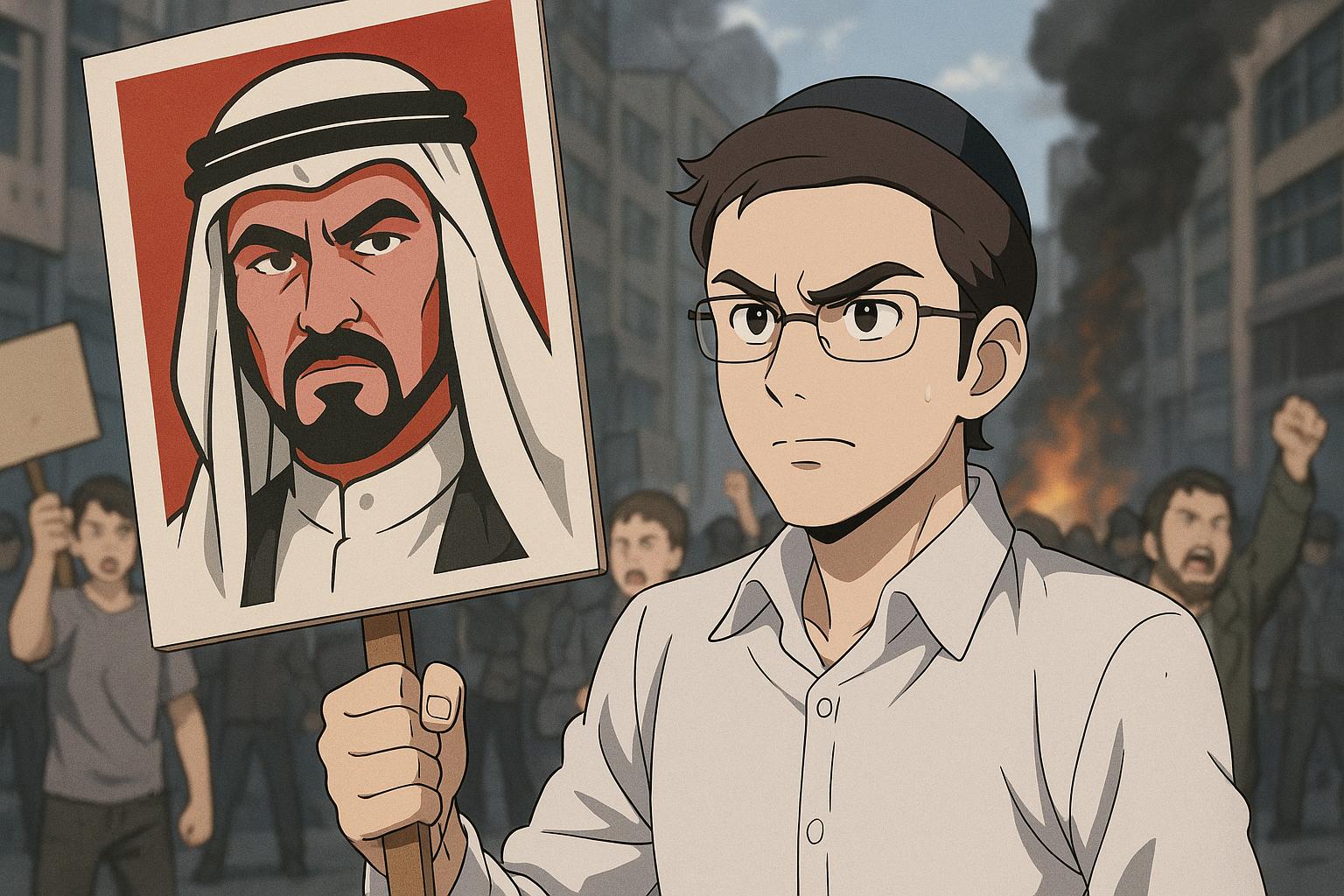A Jewish man has faced significant legal consequences after being charged with “racially aggravated harassment” due to the content of a placard he displayed during a counter-demonstration against a pro-Palestine rally in Swiss Cottage, London, on September 20, 2024. The demonstration was part of a broader series of protests that have been prevalent in the UK since the escalation of the Israel-Palestine conflict following events on October 7, 2023.
The individual, who has not been publicly named, held a sign featuring a drawing of Hezbollah leader Hassan Nasrallah, with the words “beep, beep, beep.” This image references Operation Grim Beeper, an Israeli military operation that resulted in significant casualties among Hezbollah operatives in 2024. The placard's context is vital; Hezbollah is classified as a proscribed terrorist organisation in the UK, which complicates the implications surrounding its public portrayal.
In a police interview following his arrest, an officer questioned the man's choice of imagery, implying it might incite racial hatred among demonstrators perceived as supportive of Hezbollah. The protester’s lawyer challenged this characterization, asserting that the police mislabelled the protestors, as Hezbollah is a terrorist group recognised as such by UK law. The man expressed disbelief that holding such a placard could be viewed as offensive, arguing for the political nature of his message rather than any intent to incite racial animosity. He stated, “It beggars belief that police could think that this placard may be offensive to supporters of Hezbollah.”
Following his arrest, which included an extensive search of his home by multiple officers, the case progressed to the Crown Prosecution Service (CPS). However, on May 10, 2025, the CPS dropped the charges, citing insufficient evidence for a realistic prospect of conviction. The Metropolitan Police acknowledged that an officer involved in the case “clearly misspoke” regarding the nature of the protesters, a clarification that raises broader questions about law enforcement's handling of politically charged demonstrations, especially in light of racial and religious sensitivities.
This incident forms part of a complex landscape of tensions surrounding public demonstrations related to the Israel-Palestine conflict, which have intensified globally in recent years. Across the Atlantic, similar tensions have arisen in the United States. For instance, Tarek Bazrouk, a 20-year-old man from New York, self-identified as a “Jew hater” and faces federal hate crime charges after allegedly assaulting Jewish counter-demonstrators at pro-Palestinian rallies. His case highlights ongoing incidents of violence and threats against Jewish individuals in the context of anti-Israel protests. Recently, Christopher Husary, 36, was charged with a hate crime in New York City after threatening a Jewish man on the subway during similar tensions, prompting serious questions about public safety and the impact of inflammatory rhetoric associated with these movements.
As the CPS and police reflect on their decision regarding the protester in London, the implications for future demonstrations are significant. Law enforcement strategies in dealing with politically sensitive subjects, particularly where race and religion intersect, will undoubtedly require careful scrutiny to ensure that freedoms of expression and right to protest are balanced against the need to prevent hate and violence. The ongoing scrutiny highlights the delicate nature of policing in times of heightened political tension, where the line between free speech and incitement can become perilously blurred.
Source: Noah Wire Services
